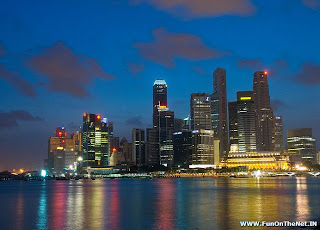Travel in Bali
The Indonesian island of Bali shore of Bali peak of Mount Bali 's many comfort spa. Bali may be little in size – you can drive approximately the entire shore in one long day – but its importance as a destination is vast, and legally so. Ask traveler what Bali means to them and you’ll get as many answers as there are flowers on a frangipani tree. Virescent rice terrace, pulse-pounding surf, charming temple ceremonies, exciting dance performances and ribbons of beaches are just some of the images people appreciate.
Small apparently doesn’t mean imperfect. The hyper whirl of Kuta segues into the comfort of Seminyak. The creative swirl of Ubud is a counterpoint to misty treks amid the volcanoes. Smooth beach town like Amed, Lovina and Pemuteran can be found right round the coast and just offshore is the laid-back idyll of Nusa Lembongan. As you trip up upon the exquisite little offerings left all over the island that materialize as if by magic, you’ll see that the tiny tapestry of colors and textures is a symbol for Bali itself.
And those are just some of the more obvious qualities. A visit to Bali means that you are in the most visitor-friendly island of Indonesia
Go Shopping-Bali has great shopping and local art. There are fine textiles, designer fashions, customized jewelry, exquisite art, handicrafts, and furniture.
Go Hiking- There are a lot of mountain and hills in Bali that make for great hiking. You can go over rice terraces and tropical jungles that make for a great unusual to the beach.
Relax in a hot spring-There are more than a few hot springs on Bali and they are a great way to rest your body after hard day in the sun, surf, or hiking in the jungle.
Pamper yourself at a spa- Bali is heaven for spa lovers and all sorts of treatment are broadly available, but the Balinese lulur body scrub with herbs and spices is particularly popular. There’s no better way to spoil your body and soul than with the supernatural touches of spa treatments. Find out for yourself why some of Bali ’s spas have been chosen the world’s most excellent.
 Get married- Balinese weddings are now very in style as they can be done a lot cheaper than conventional weddings. Full wedding services are widely obtainable in Bali and there are about ten wedding chapels in
Get married- Balinese weddings are now very in style as they can be done a lot cheaper than conventional weddings. Full wedding services are widely obtainable in Bali and there are about ten wedding chapels in about a fourth of what they would in the West.
Scuba dive/Snorkel- Bali is enclosed by general coral reefs and has many wonderful dive sites. There are a few wrecks around the islands too. If diving if not your thing, you can always snorkel.
Learn to surf- Bali is a surfer’s heaven with some of the best waves in the world. People flock to the beaches to hang ten. The southern shore around Kuta and Nusa Dua are the main places to learn how to surf. Beginners will find the tender waves on Kuta. It’s easy to find teachers- you’ll find surf instructors
lounging around the beach.
Visit Pura Ulun Danu Bratan- Situated in the northern part of the island, this significant Hindu-Buddhist temple was founded in the 17th century and is really built on small islands. It’s a very well-liked destination for tourists on the island
Visit Pura Ulun Danu Bratan- Situated in the northern part of the island, this significant Hindu-Buddhist temple was founded in the 17th century and is really built on small islands. It’s a very well-liked destination for tourists on the island
Eat Well- Bali spoil their visitors for selection. There is great local and international restaurants all over the island. Whatever your gastronomic needs, Bali has it.












